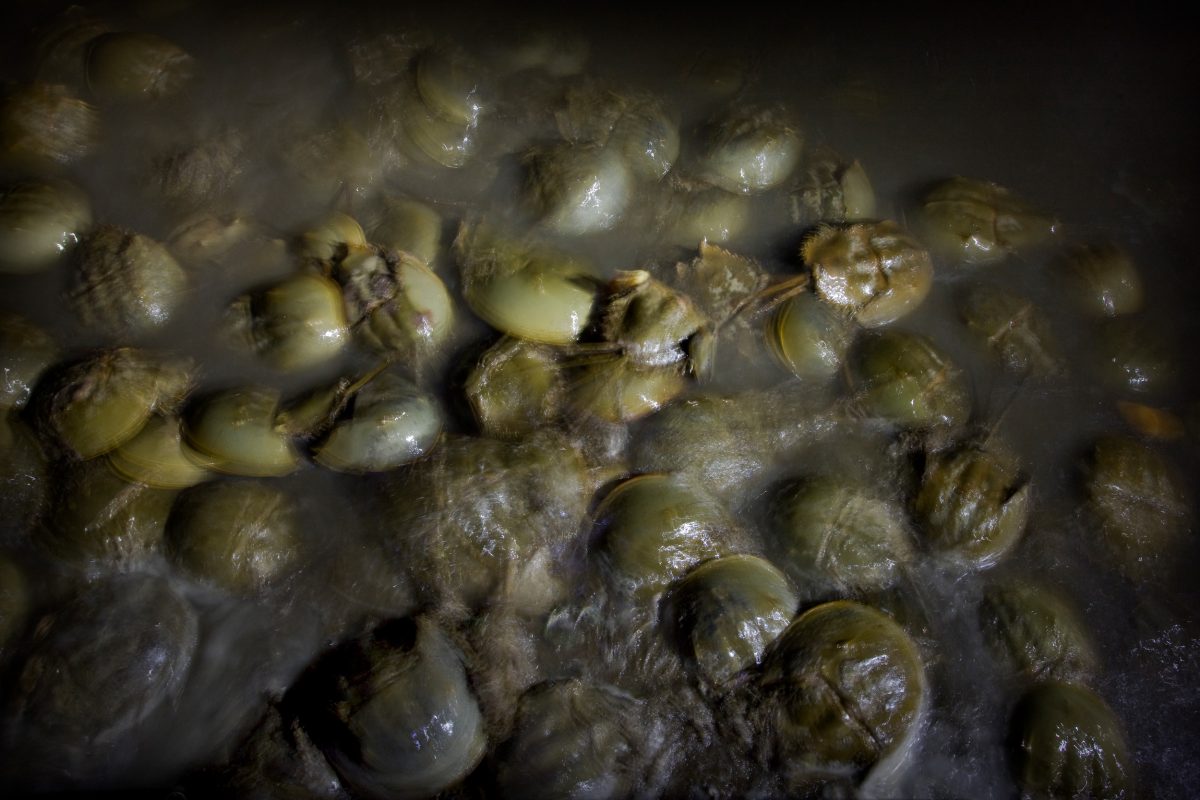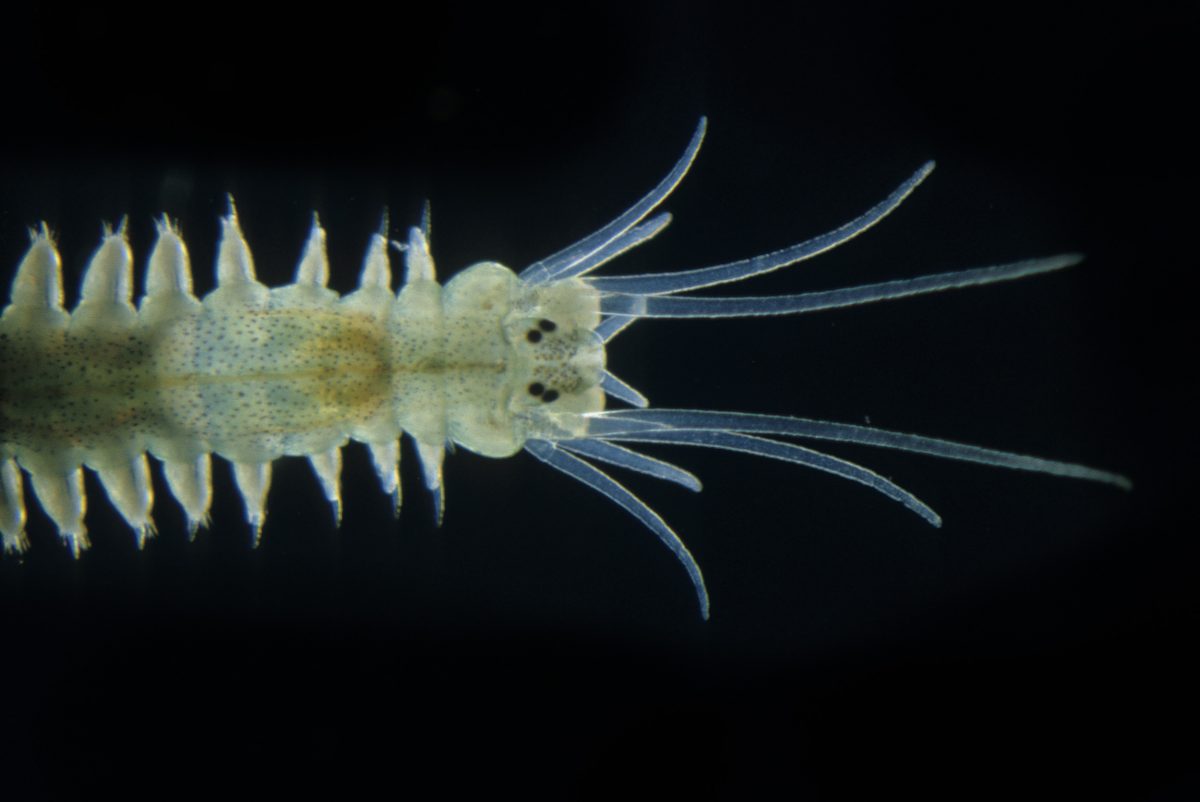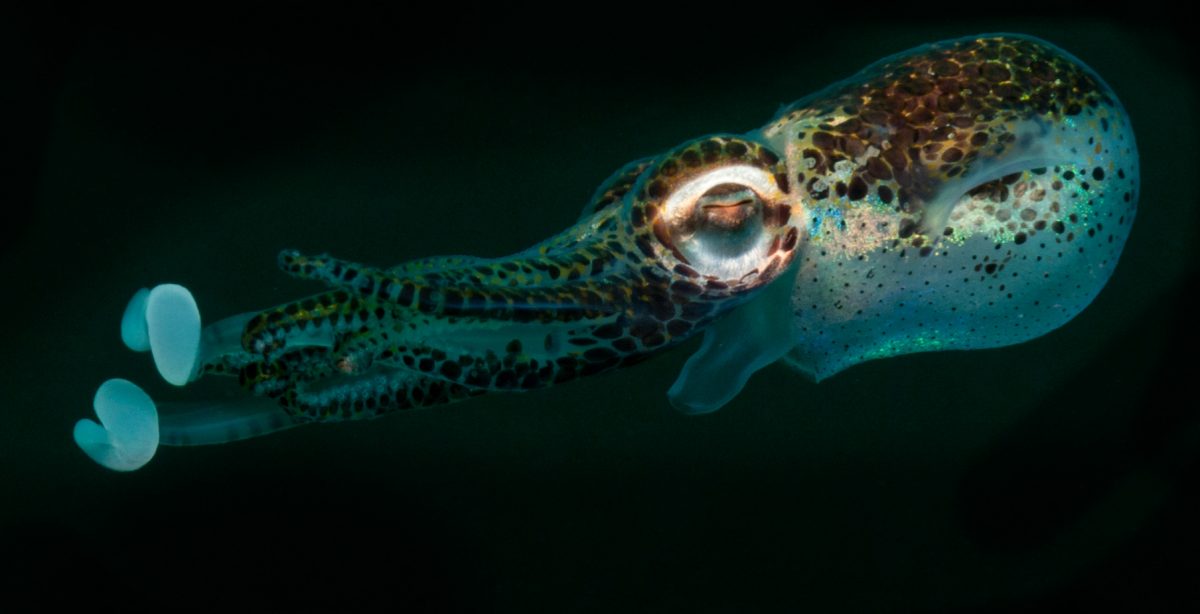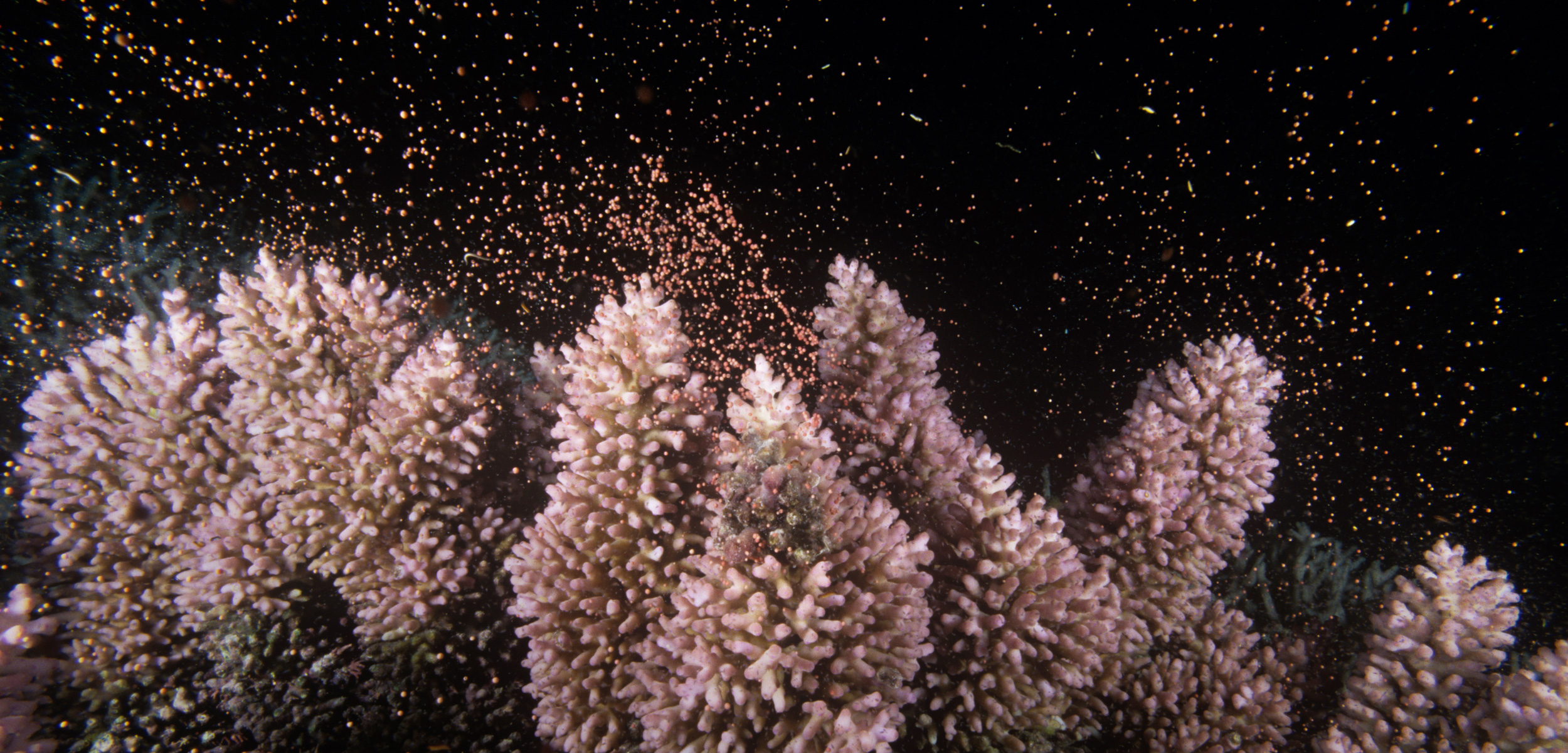The Lunar Sea
The moon influences life in a surprising and subtle way: with its light.
Article body copy
One November night each year, beneath the full moon, more than 130 species of corals simultaneously spawn in Australia’s Great Barrier Reef. Some corals spew plumes of sperm, smoldering like underwater volcanoes. Others produce eggs. But most release both eggs and sperm, packed together in round, buoyant bundles as small as peppercorns and blushed in shades of pink, orange, and yellow. At first, the parcels wait in the lips of corals. Then, in stunning unison, numerous corals lose their seeds, which hover momentarily above their parents, preserving the shape of the reef in an effervescent echo. Gradually, the bundles drift skyward.
The first time marine biologist Oren Levy witnessed this phenomenon, in 2005, he was near Heron Island, off the east coast of Australia. Fish, marine worms, and various predatory invertebrates zipped through the water, feeding on the coral confetti, which rose slowly from the reef in huge quantities. “It’s like the whole ocean wakes up,” says Levy, who now heads a marine ecology research team at Bar Ilan University in Israel. “You can watch videos, you can hear about it, but once you are actually in the midst of the biggest orgy on this planet, there’s nothing else like it.” Corals continue to reproduce in the Great Barrier Reef today, though the sections that have escaped the ravages of climate change are rapidly shrinking. Swimming near the surface of the sea that memorable night 12 years ago, Levy encountered dense pink mats of accumulating eggs and sperm. There, drenched in moonlight, gametes from different colonies began to fuse and form free-swimming larvae, which would eventually settle on the seafloor, bud, and construct new coral citadels—a process now more vital than ever.
The moon is not the only environmental cue the corals use to achieve sexual synchrony on such a massive scale; water temperature and day length also matter. Yet the moon’s presence seems to be crucial. If the sky is too cloudy, and the moon obscured, the corals will often not spawn. Sometimes they delay until the next full moon. In the course of their studies, Levy and his colleagues revealed that not only do corals have light-sensitive neurons tuned to the dim blue wavelengths of moonlight, they also have genes that change their activity level in sync with the waxing and waning moon, regulating reproduction.
Like an underwater snowstorm in reverse, corals spawn in unison, triggered by the phase of the moon.
Scientists have known for centuries that the moon alters Earth’s ecosystems through gravity. As it spins around our planet, warping space-time, the moon contributes to a complex contortion of the oceans, producing twin bulges we call the tides. In turn, the daily marriage and separation of land and sea transforms the topography of numerous species’ homes and the access they have to food, shelter, and each other.
The moon also stabilizes Earth’s climate. Earth does not have perfect posture; it is tilted along its polar axis, circling the sun at an angle of about 23 degrees. The moon acts as an anchor, preventing the Earth from varying its axial tilt by more than a degree or two. Without the moon, our planet would likely wobble about like a dreidel, tilting a full 10 degrees every 10,000 years, and possibly oscillating the global climate between ice ages and hellish heat the likes of which no species has ever endured.
What is becoming increasingly clear, however, is that the moon also influences life in a more surprising and subtle way: with its light. Most organisms possess an array of genetically encoded biological clocks that coordinate internal physiology and anticipate rhythmic changes in the environment. These clocks are wound by various environmental cues known as zeitgebers (time givers), such as light and temperature. Sunlight is the best-studied zeitgeber, but it turns out that for many aquatic creatures, moonlight is just as crucial. In the past few years, scientists have rekindled a long-neglected curiosity about the moon’s power to manipulate life, reviving studies on biology’s secret moon clocks.
In antiquity, the influence of the moon on earthbound life was intuited—and celebrated. Our ancestors revered the moon as the equal of the sun, a dynamic signature of time, and a potent source of fertility.
“Time was first reckoned by lunations, and every important ceremony took place at a certain phase of the moon,” wrote English classicist Robert Graves in The Greek Myths. A 25,000-year-old limestone carving discovered in a rock shelter in France depicts a pregnant woman holding what appears to be a bison horn with the swoop of a crescent moon and 13 small notches—a possible paean to reproductive and lunar cycles. And some early Meso-American cultures seemed to believe that the moon deity controlled sexuality, growth, rainfall, and the ripening of crops.
In more recent times, the importance of the moon to Earth’s creatures has been eclipsed by the great solar engine of life. The sun is searingly bright, palpably hot, bold, and unmissable; our steadfast companion for many of our waking hours. The moon is spectral and elusive; we typically catch it in glimpses, in partial profile, a smudge of white in the dark or a glinting parenthesis. Sunlight bakes the soil, bends the heads of flowers, pulls water from the seas. Moonlight seems to simply descend, deigning to visit us for the evening. We still perceive the sun as the great provider—the furnace of photosynthesis—but the moon has become more like mood lighting for the mystical and occult; more a symbol of the spirit world than of our own. “There is something haunting in the light of the moon; it has all the dispassionateness of a disembodied soul, and something of its inconceivable mystery,” wrote Joseph Conrad in Lord Jim. The sun’s immense power over Earth and its creatures is scientific fact; to endow the moon with equal power is to embrace fairy tales and ghost stories.
Perhaps with such biases in mind, scientists in the past several decades have been much more interested in earthly life’s relationship with the sun than its potential interaction with the moon. This disparity widened around the 1970s and ’80s with the discovery of circadian clocks—sun-synced networks of genes, proteins, and neurons—in flies, rodents, and other lab animals. But nature itself has been far more impartial, especially in the oceans, where life first evolved. Numerous sea creatures also move in time with the silver pendulum of night.
Often, moonlight—independent of the tides—signals the start of a species-wide reproductive marathon. By syncing these orgies to particular phases of the moon—one of nature’s most prominent and reliable records of time—animals increase their chances of finding a mate and overwhelm opportunistic predators with their sheer numbers.
During certain phases of the moon, Sesarma crabs in Japan collectively scuttle across mountain slopes toward sea-flowing rivers, where they release their eggs and sperm. The annual migrations of Christmas Island crabs, which move in waves of crimson from forest to sea to mate and lay their eggs, also seems to be linked to moonlight’s shifting intensity. Moonlight even sharpens the visual acuity of horseshoe crabs, which come ashore on certain nights to mate. Likewise, studies suggest that the moon’s glow is one of the environmental triggers for synchronous spawning in tropical rabbit fish. Moonlight likely increases production of the hormone gonadotropin in these fish, which promotes gamete maturation.

Triggered by the full moon, horseshoe crabs on Delaware Bay, Delaware, come ashore en masse to spawn. Photo by Ingo Arndt/Minden Pictures
In 2013, neurobiologist Kristin Tessmar-Raible and her colleagues published some of the most compelling evidence of a molecular moon clock in an ocean creature. They studied the marine bristle worm Platynereis dumerilii, which looks like an amber centipede with tiny feathered oars running the length of its body. In the wild, the bristle worm lives on algae and rocks, spinning silk tubes for shelter. While reading studies from the 1950s and ’60s, Tessmar-Raible learned that some wild bristle worm populations achieve maximal sexual maturity just after the new moon, swimming to the ocean surface and twirling in circles in a kind of whirling dervish nuptial dance. The studies suggested that changing levels of moonlight orchestrated this mating ritual. “At first I thought this was really crazy in terms of biology,” says Tessmar-Raible, who notes that she grew up far from the ocean, “but then I started talking to colleagues in marine biology and realized that this might not be so uncommon.”
To learn more, Tessmar-Raible and her colleagues kept bristle worms in plastic boxes, feeding them spinach and fish food, and simulating typical and aberrant moon cycles with an array of standard light bulbs and LEDs. Worms raised in perpetual light or in entirely moonless day-night cycles never displayed reproductive rhythms. But worms reared with periodic nocturnal illumination synced their spawning rituals to the phases of their artificial moon. As suggested by earlier studies, Tessmar-Raible found light-sensitive neurons in the worms’ forebrains. And genetic sequencing revealed that the bristle worm has its own versions of essential molecular clock genes found in terrestrial insects and vertebrates. Tessmar-Raible’s conclusion is that the worms have a robust lunar clock analogous to the more familiar sun-synced circadian clock. “This is an endogenous oscillator,” she says. “Something in the body preserves the memory of those nocturnal illuminations.”
In similar studies, Oren Levy and his colleagues collected pieces of living corals from Heron Island reef and housed them in large outdoor aquaria, some of which were exposed to ambient sunshine and moonlight, some shaded at night to block all moonlight, and some subjected to dim artificial light from sunset to midnight and then kept in the dark until sunrise. Each day for eight days before the estimated night of mass spawning, the researchers collected bits of corals from the different aquaria and analyzed the activity of their genes. The corals in natural conditions spawned as predicted and expressed many genes only during or just before releasing their gametes. Corals subjected to artificial light and deprived of moonlight displayed anomalous gene expression and failed to release their gametes.

Marine bristle worms are inspired to mate by the light of the silvery new moon. Photo by D. P. Wilson/Minden Pictures
For other species, the moon’s light is more important as a navigational cue than as an aphrodisiac. Migrating chum salmon swim more quickly and at shallower depths during a full moon, likely because they are using its light as a lodestar. Albatrosses and streaked shearwaters often fly more frequently and for longer periods of time under a full moon, perhaps because they can travel farther with increased visual acuity, or to avoid lurking ocean predators whose eyesight is improved by moonlit water. Newborn rabbit fish seem to depend on moon phases to reach safety: on the day before or during the new moon, when the sea is darkest, rabbit fish fry born in the open sea migrate en masse to the haven of coral reefs.
Even plankton move differently beneath the moon. Every day, in oceans around the world, plankton sink to greater depths, and rise again at night, most likely to avoid predation and feed in shallower waters under the cover of dark. Scientists are still not sure what drives this daily rhythm, but a biochemical clock synced to the sun is one of the primary hypotheses. During the Arctic winter, however, sunlight never reaches some regions of the ocean. A recent study suggests that plankton living in this frigid continuous dusk rely instead on the moon.
Some animals do not just change beneath the moon; they change into the moon. During the day, bobtail squid—speckled, peanut-sized cephalopods related to cuttlefish—bury themselves in sand to rest and hide from predators. At night, they emerge to feed on shrimp and worms. Having abandoned the seafloor and exposed themselves to potential danger, the tiny mollusks cloak themselves in an entirely different kind of camouflage. Bobtail squid have evolved one of the most magical symbioses on the planet. Bioluminescent bacteria live within the folds of a chambered sac in the squid’s mantle, generating light that spills from the squid’s underside. A lens and color filter attached to this internal lantern—known as the light organ— modulate the microbial glow to mimic the light of the moon and stars filtering down through the water. In this way, bobtail squid erase their own shadow. Instead of seeing a conspicuous squid-shaped silhouette, any predator gazing up from below sees only more moonlit sea. Several other species—including deepwater fish, crustaceans, and true squid—use similar counter-illumination strategies.

Bobtail squids house bioluminescent bacteria in their tissues. Viewed from below, the glowing cephalopods mimic the moon. Photo by Jurgen Freund/Minden Pictures
The moon has always been simultaneously foreign and familiar, frustratingly distant yet teasingly intimate. It’s the nearest alien world to us, so close we consider it “ours”—our satellite, subject to our gravity. Yet for most of human history, the moon was fundamentally unreachable, regarded as an ethereal disc beyond our realm. The history of our relationship with the moon is a history of closing that gap. On November 30, 1609, Galileo gazed at the moon through his telescope and concluded that its surface was not “uniformly smooth and perfectly spherical, as countless philosophers have claimed about it and other celestial bodies, but rather, uneven, rough, and full of sunken and raised areas like the valleys and mountains that cover the Earth.” Nearly four centuries later, we landed on the moon and stepped out of a spacecraft onto its rugged terrain. Now, anyone with Internet access can explore a virtual facsimile of the moonscape, courtesy of Google. The more we have learned about the Earth and moon, the closer they have seemed. From the beginning of life on this planet, the moon—that looping mirror of the sun—without ever touching us, without generating light or heat of its own, profoundly shaped the rhythms of Earth and its collective life forms. The moon, our silver sister, was always right here with us, awash in our seas, pooling in our eyes, written into the planet’s very DNA.

